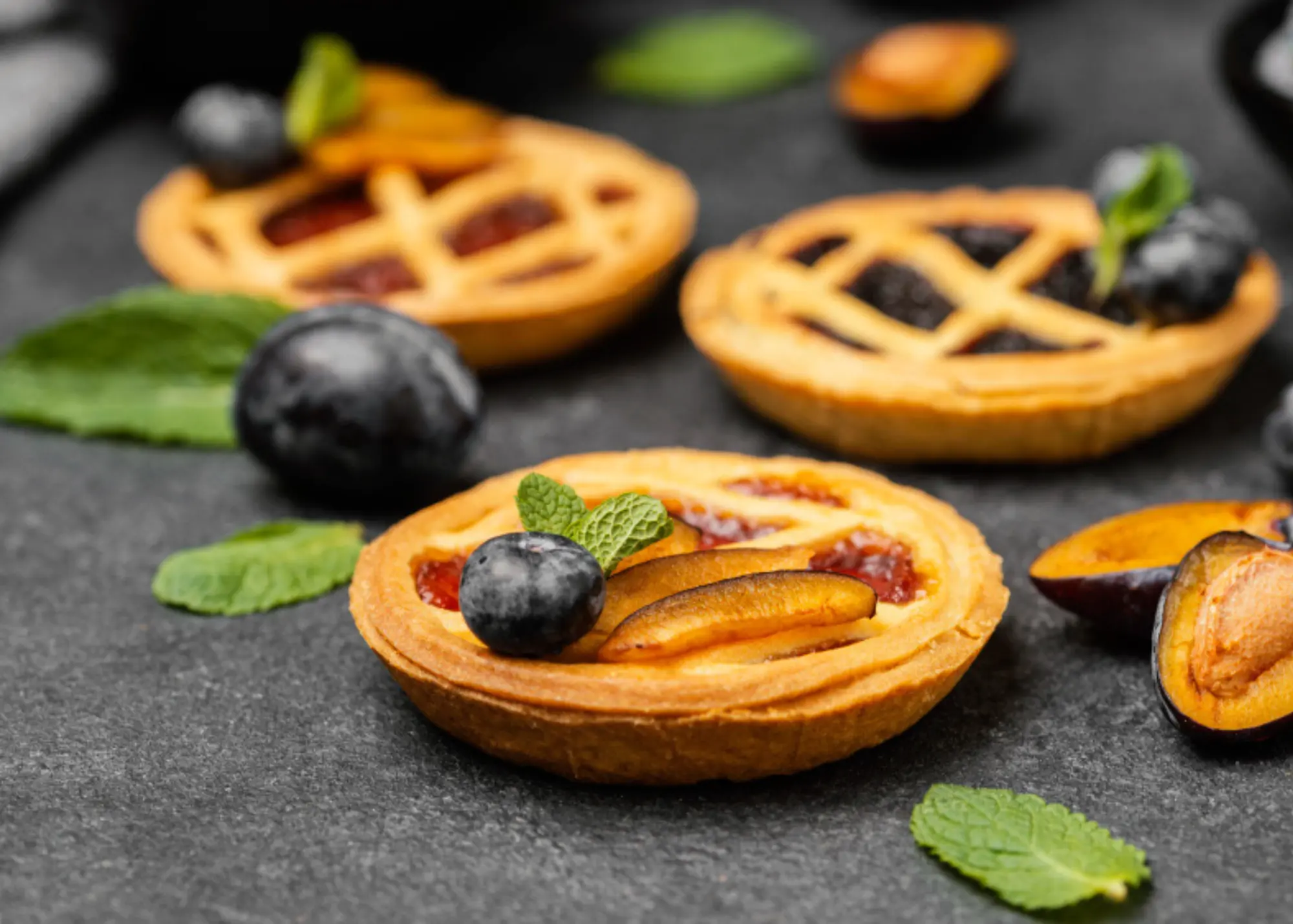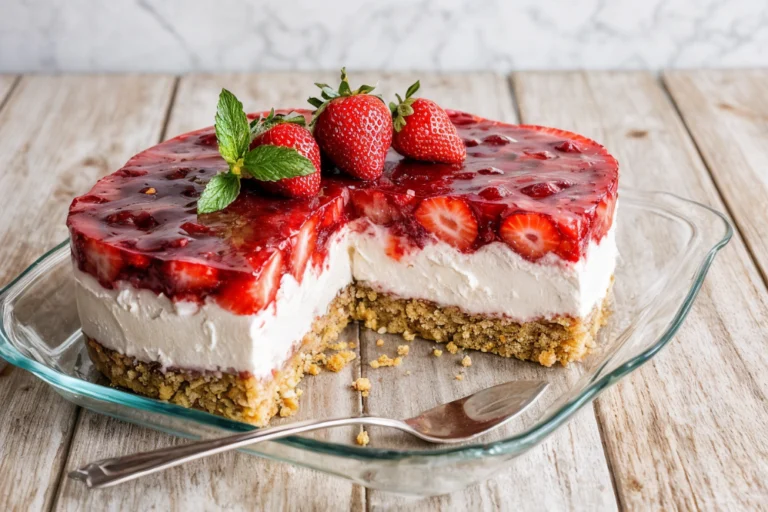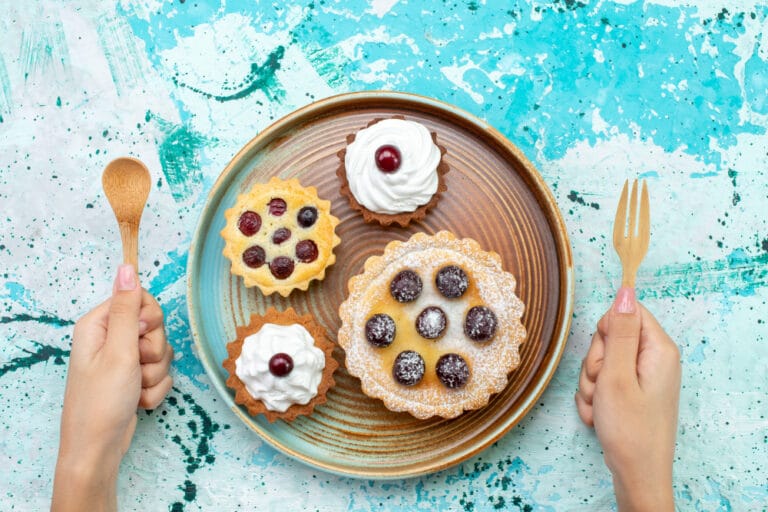Indulging in sweet treats is a pleasure you don’t have to give up just because you’re managing diabetes. With the right choices, you can enjoy delicious desserts without compromising your health or nutrition goals.
The key is to select desserts that are designed to minimize sugar spikes. By understanding the science behind blood sugar management and choosing the right ingredients, you can create satisfying treats that fit into your meal plan.
This guide will introduce you to top dessert options that are not only delicious but also diabetic-friendly, focusing on their glycemic impact and overall nutritional profile.
Listen to our podcast about this article
Table of Contents
Understanding Blood Sugar and Desserts
For individuals with diabetes, understanding the relationship between desserts and blood sugar levels is vital for maintaining good health. Consuming desserts can be challenging, but being aware of their impact on your blood sugar is key.
Blood sugar levels rise when you consume carbohydrates, especially simple sugars found in traditional desserts. The glycemic index and load are handy for figuring out which sweets won’t mess with your blood sugar too much. Traditional desserts often contain refined sugars, white flour, and other ingredients that cause rapid blood sugar spikes.
The nutrition content of desserts plays a crucial role in managing blood sugar response. The fiber, protein, and fat content in desserts can slow down sugar absorption and help prevent dramatic blood sugar fluctuations. Learning to read nutrition labels is essential for identifying hidden sugars in packaged desserts.
| Factor | Impact on Blood Sugar | Beneficial Ingredients |
|---|---|---|
| Glycemic Index | Helps determine the effect of desserts on blood sugar | Fiber, Protein, Healthy Fats |
| Portion Control | Crucial in managing blood sugar response | Cinnamon, Nuts, Certain Fruits |
| Timing of Consumption | Cinnamon, Nuts, and Certain Fruits | Protein, Fiber |
By understanding these factors and making informed choices, you can enjoy desserts while maintaining control over your blood sugar levels. Monitoring your response to different desserts is also important, as each person’s body reacts differently to various ingredients.
What Makes a Dessert Diabetic-Friendly?
The key to enjoying desserts with diabetes lies in understanding what makes a dessert diabetic-friendly, from the type of ingredients used to the size of your serving. When it comes to diabetic desserts, it’s not just about cutting down on sugar; it’s about making smart choices that impact your overall nutrition.
Diabetic-friendly desserts often incorporate ingredients that help manage blood sugar levels. For instance, using sugar substitutes or natural sweeteners like stevia or monk fruit can significantly reduce the sugar content. Additionally, high-fiber ingredients such as whole grains, nuts, and seeds play a crucial role in slowing down carbohydrate absorption, thereby preventing a rapid spike in blood sugar.
- Eating avocados, nuts, and olive oil gives you healthy fats that can help your body use insulin more effectively.
- Protein-rich ingredients like Greek yogurt or cottage cheese help balance the carbohydrate content.
- Fresh fruits add natural sweetness and beneficial nutrients without the need for added sugars.
- Opting for desserts with a lower glycemic index is preferable as they cause a slower rise in blood sugar.
It’s also crucial to practice portion control, as even diabetic-friendly desserts should be consumed in moderation. By being mindful of the total carbohydrate content and choosing recipes that are balanced and nutritious, you can enjoy your favorite desserts without compromising your health.
Berry-Based Frozen Treats
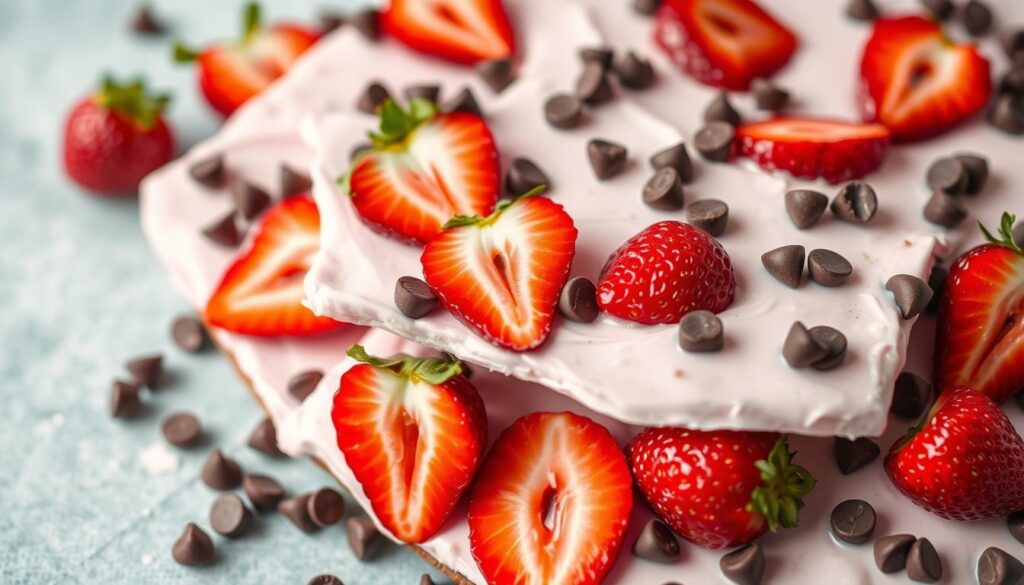
Berry-based frozen treats offer a refreshing and healthy dessert option for those managing diabetes. Berries are naturally low in sugar and high in fiber and antioxidants, making them an excellent base for diabetic-friendly frozen desserts.
One delicious recipe is the Strawberry-Chocolate Greek Yogurt Bark, which combines protein-rich Greek yogurt with fresh berries for a refreshing frozen treat that won’t spike your blood sugar. To make it, lightly sweetened Greek yogurt gets studded with fresh strawberries and chocolate chips and then frozen so you can break it into chunks.
Other options include frozen berry smoothie pops made with unsweetened almond milk, mixed berry sorbets with minimal sweeteners, and berry-based “nice cream” using frozen bananas and berries blended to an ice cream-like consistency. You can also add chia seeds to berry popsicles to increase the fiber content, helping to slow down sugar absorption.
These frozen treats are not only delicious but also easy to prepare in advance and keep in the freezer for when sugar cravings strike. The high water content in berries makes them naturally refreshing, and their intense flavor means you need less sweetener. Enjoy your favorite fruit-based dessert without worrying about your blood sugar levels.
Flourless Chocolate Cookies
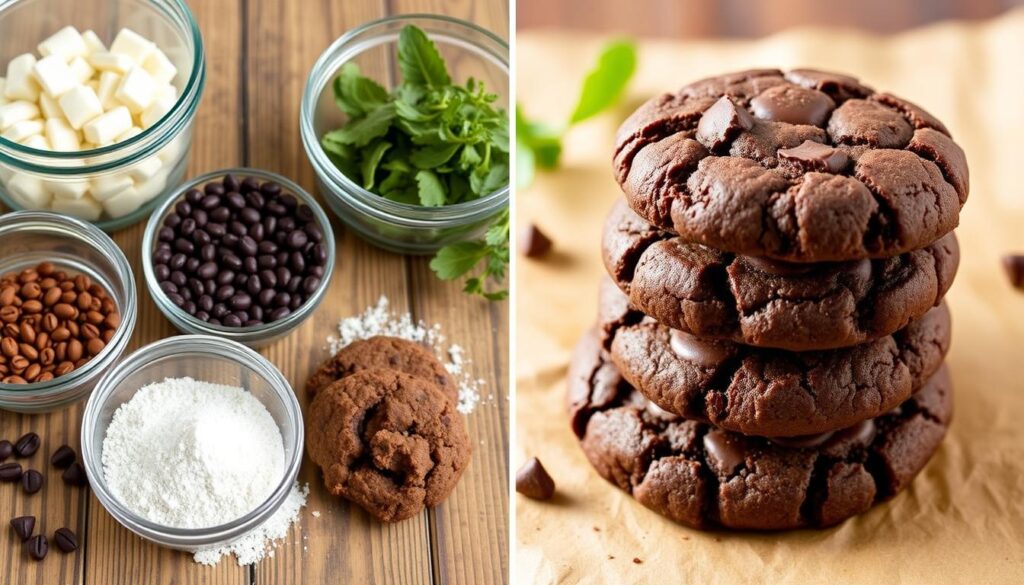
You can enjoy the decadence of flourless chocolate cookies without worrying about your blood sugar. These chocolate cookies are super light and melty because they use whipped egg whites instead of flour, so they’re gluten-free too!
Several benefits come with choosing flourless cookies as a dessert or treat. They don’t have any refined white flour in them, and that’s good because that kind of flour can make your blood sugar spike. The use of dark chocolate with a high cocoa percentage (70% or higher) not only reduces sugar content but also provides beneficial antioxidants.
To make a simple recipe, you can add nuts to increase the protein and healthy fat content, helping to slow down sugar absorption. A sprinkle of sea salt can enhance the chocolate flavor without adding sugar, making these cookies a perfect indulgence.
Nutty Delights: Peanut Butter Treats
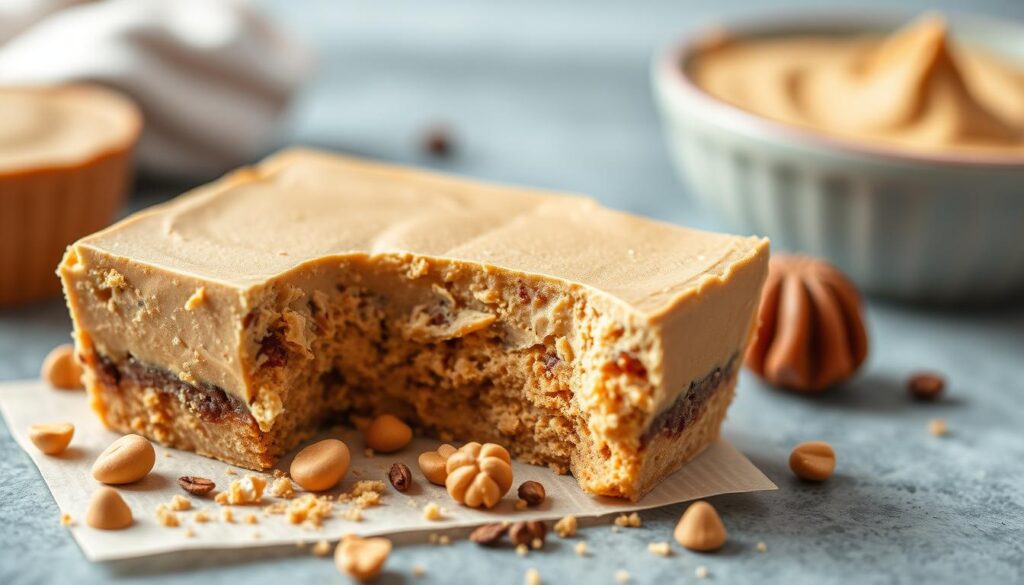
Even with diabetes, you can enjoy some sweet peanut butter goodies! Peanut butter is an excellent ingredient for diabetic desserts because it’s low in carbohydrates and high in protein and healthy fats. This makes it a great base for creating treats that won’t spike your blood sugar.
One of the simplest ways to enjoy peanut butter desserts is by making no-bake treats. These can be prepared with minimal added sweeteners, relying on the natural richness of the peanut butter for flavor. Combining peanut butter with high-fiber ingredients like oats creates a satisfying treat that won’t cause blood sugar spikes. You can also make peanut butter cookies using almond flour instead of wheat flour for a lower-carb alternative.
Throwing a little cinnamon in your peanut butter treats makes them taste even better and might even help keep your blood sugar steady. Portion control is easy with bite-sized peanut butter balls that satisfy your cravings without overindulging. For the healthiest option, choose natural peanut butter without added sugars or hydrogenated oils.
For a delicious peanut butter dessert recipe, consider making crispy peanut butter balls with just four simple ingredients. This easy recipe is perfect for a bite-sized treat, an on-the-go snack, or a homemade gift. You can also experiment with different nut butters like almond or sunflower seed butter for a nut-free alternative.
Fruit-Based Pies and Tarts
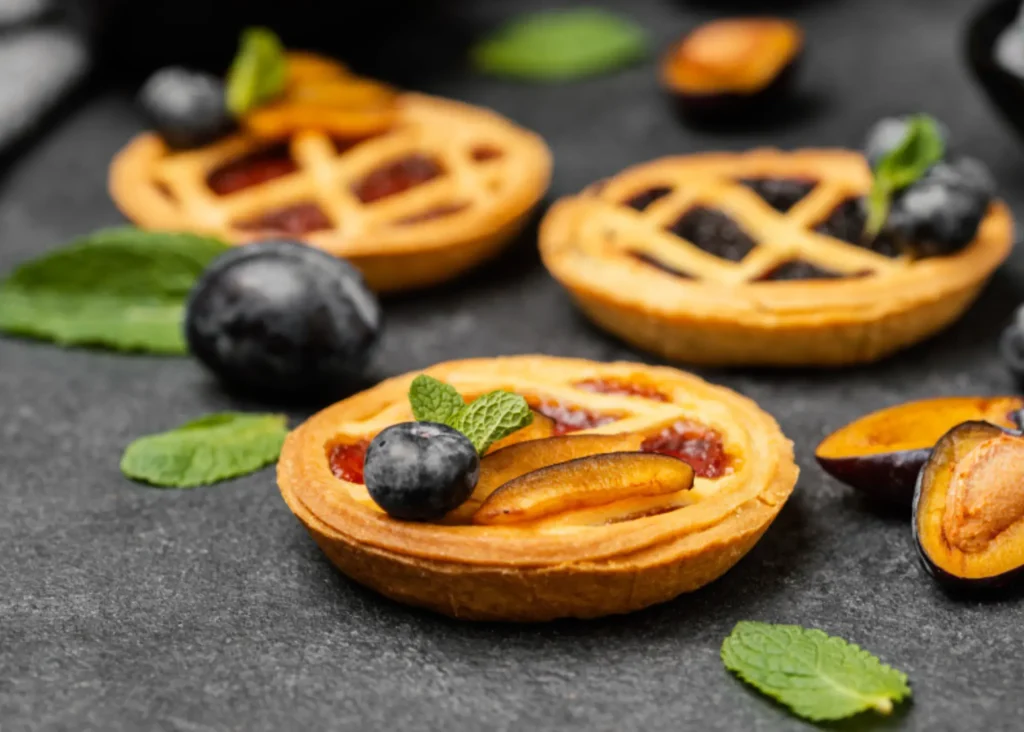
Enjoy the natural sweetness of fruits in pies and tarts, a perfect dessert for those managing diabetes. You can make these treats diabetic-friendly by focusing on the natural sweetness of the fruit and reducing added sugars.
One way to reduce carbs in your pie is by making it crustless, which eliminates the high-carb pie crust. Alternatively, using almond flour or coconut flour for the crust creates a lower-carb alternative to traditional wheat-based crusts.
Berries, apples, and pears are excellent choices for diabetic-friendly pies as they contain fiber that helps slow sugar absorption. So, if you throw in some warm spices like cinnamon, nutmeg, or cloves, it can trick your taste buds into thinking something’s sweeter, even without adding more sugar.
You can also make individual fruit tarts to help with portion control. Baking fruit intensifies its natural sweetness, allowing you to use less added sweetener in your recipe. Consider topping your pie or tart with unsweetened whipped cream or Greek yogurt for added creaminess without significant added sugar.
By incorporating these tips into your baking, you can enjoy delicious and diabetic-friendly pie recipes that fit your dietary needs.
Creamy Greek Yogurt Desserts
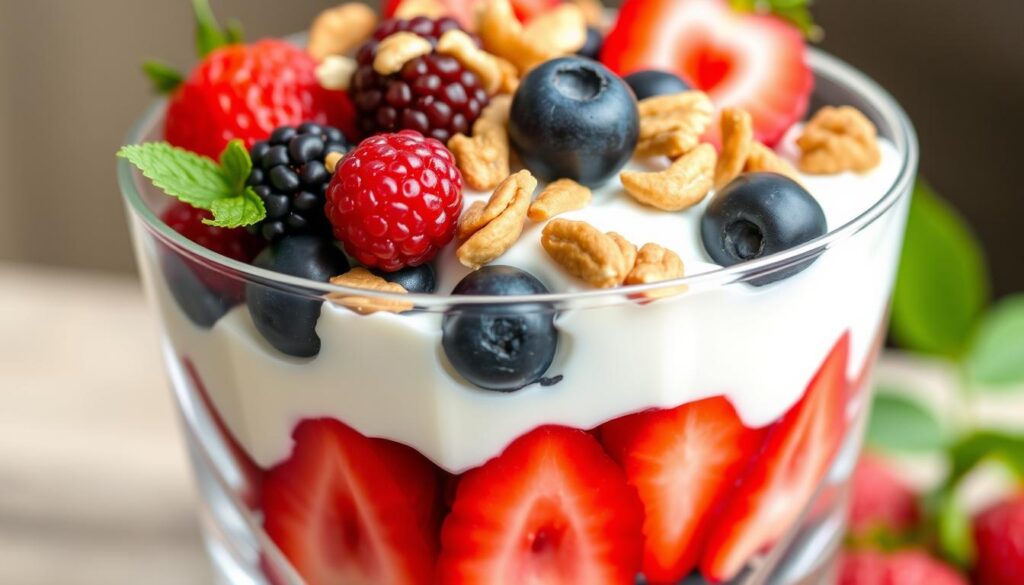
You can satisfy your sweet tooth with creamy Greek yogurt desserts that are diabetic-friendly. Greek yogurt provides a protein-rich base for desserts that won’t spike your blood sugar levels like traditional puddings or custards.
The tangy flavor of Greek yogurt pairs beautifully with fresh fruits, creating a refreshing dessert with minimal added sweeteners. For instance, layered Greek yogurt parfaits with berries and a sprinkle of nuts make for a visually appealing dessert with balanced nutrition.
Some other benefits of Greek yogurt desserts include being able to prepare them in advance and store them in the refrigerator for a quick sweet fix. You can also make Greek yogurt cheesecakes that use less sugar than traditional versions while maintaining a creamy texture.
Additionally, frozen Greek yogurt treats offer a lower-sugar alternative to ice cream. If you whip up Greek yogurt with a little heavy cream, it gets all mousse-y and makes a super yummy dessert. You can also enhance the flavor with vanilla or almond extract without adding sugar.
Wholesome Oat-Based Cookies
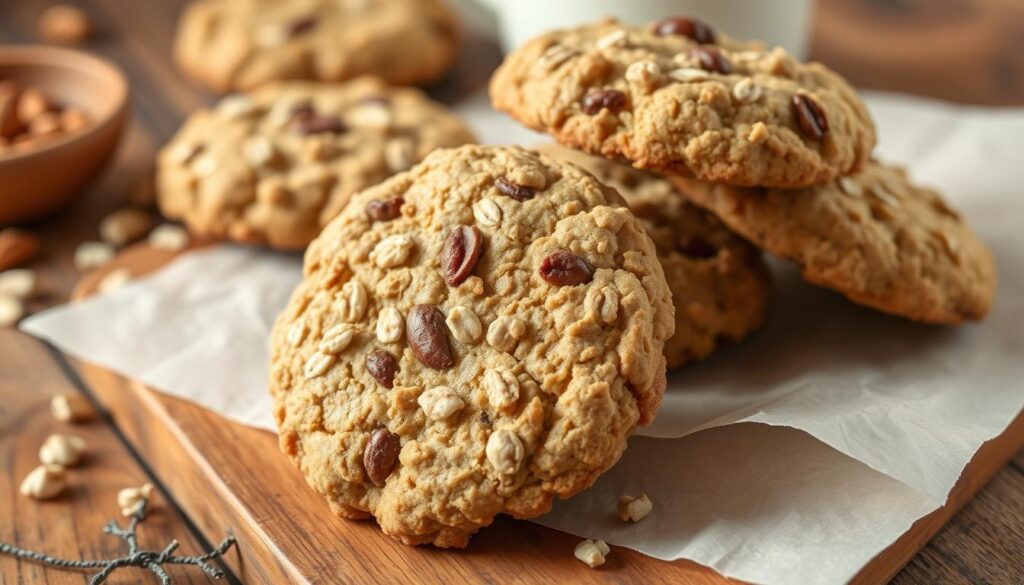
Oat cookies are a yummy way to handle your sweet cravings without your blood sugar going crazy. Oats are an excellent ingredient for diabetic-friendly cookies because they contain beta-glucan, a type of soluble fiber that helps regulate blood sugar.
Oat-based cookies can be sweetened with mashed ripe bananas or unsweetened applesauce instead of refined sugar. Adding nuts, seeds, or dried fruits to oatmeal cookies increases their nutritional value and helps slow down carbohydrate absorption.
Some other benefits of oat-based cookies include their chewy texture, which makes them satisfying even with less sugar, and the ability to add flavor with spices like cinnamon, nutmeg, and ginger without adding carbohydrates. Using oat flour can also replace some or all of the wheat flour for a higher-fiber alternative.
These cookies are not only delicious but also more filling and convenient as a make-ahead option. You can enjoy a simple recipe for diabetic oatmeal cookies by incorporating these tips, making snack time enjoyable while managing your blood sugar levels.
Sugar-Free Chocolate Indulgences
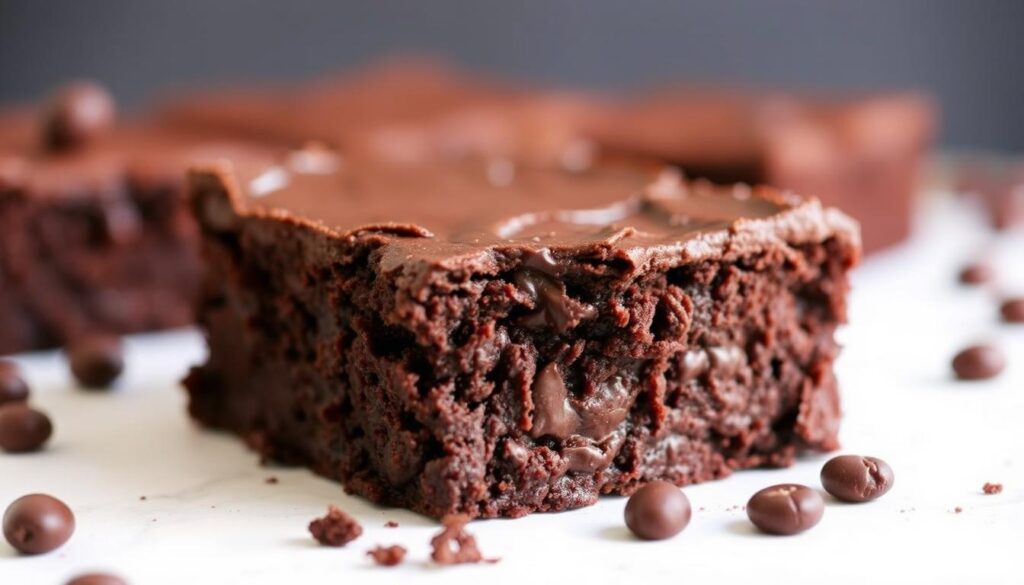
You can still enjoy decadent chocolate desserts even with dietary restrictions, thanks to innovative sugar-free recipes. Sugar-free chocolate desserts are not only delicious, but they also cater to those managing their blood sugar levels. Dark chocolate with 70% or higher cocoa content is a great starting point, as it naturally contains less sugar while providing an intense chocolate flavor.
Alternative sweeteners like stevia, erythritol, or monk fruit are commonly used in sugar-free dessert recipes. These sweeteners don’t impact blood sugar levels, making them ideal for diabetic-friendly treats. For instance, black bean brownies provide a fudgy texture while adding fiber and protein that help regulate blood sugar.
Other creative sugar-free chocolate treats include avocado chocolate mousse, which uses ripe avocados for a creamy texture, and sugar-free chocolate cake made with nut flours like almond or hazelnut flour for a lower-carb alternative. Adding espresso powder increases he chocolate flavor without adding sugar. You can also try recipes for chocolate chia pudding, which combines the richness of cocoa with the blood sugar-stabilizing benefits of chia seeds.
Refreshing Fruit Sorbets and Nice Creams

Indulge in the sweet taste of fruit sorbets and nice creams, perfect diabetic ice cream alternatives. These desserts are not only delicious but also packed with nutrients and fiber, making them a great choice for those managing diabetes.
Fruit sorbets and nice creams are made from all-fruit, are dairy-free, and contain no added sugar, making them ideal treats. For instance, “nice cream” made from frozen bananas provides a creamy ice cream-like texture without the added sugars or dairy.
Some benefits of these frozen treats include:
– They can be made with minimal sweeteners, relying on the natural sweetness of ripe fruit.
– Adding a squeeze of lemon or lime juice enhances flavor without adding many calories.
– They’re naturally dairy-free, suitable for those with lactose intolerance.
By making your own fruit sorbets and nice creams, you can control the sweetness level and portion size, making it easier to manage your diabetes. Try a simple recipe by blending frozen bananas with a bit of lime juice for a delicious treat or dessert.
Cheesecake Alternatives
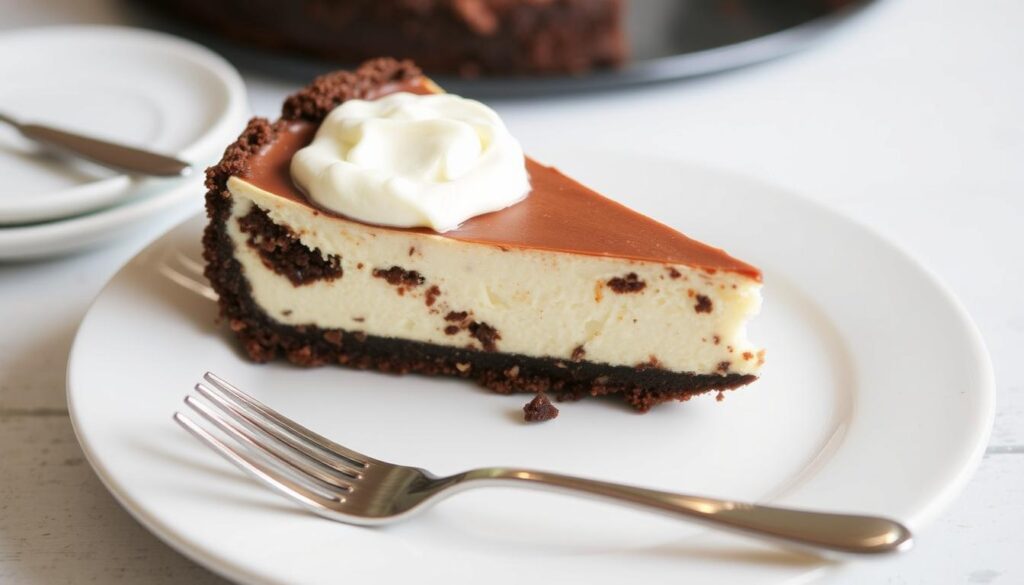
Cheesecakes can be a diabetic’s dessert dilemma, but alternatives exist. Traditional cheesecakes are high in sugar and fat, but diabetic-friendly versions can be made with lower-fat cream cheese or ricotta cheese and less added sugar.
You can create a lower-carb crust using almond flour or crushed nuts instead of graham cracker crumbs. Additionally, using Greek yogurt can replace some or all of the cream cheese, resulting in a higher-protein, lower-fat cheesecake.
Some diabetic-friendly cheesecake recipes also eliminate the need for sugar-laden condensed milk by opting for no-bake versions. Individual cheesecake cups can help with portion control, allowing you to enjoy the creamy, rich dessert without overindulging.
Sweetening your cheesecake with a combination of stevia and a small amount of honey can create a more balanced flavor. You can also add natural sweetness and visual appeal with fresh fruit toppings, avoiding sugary syrups.
To lighten the cheesecake filling, you can fold in whipped egg whites for a soufflé-like texture. These cheesecake alternatives can be made ahead and frozen in individual portions for an occasional treat, making them a convenient dessert option.
The Role of Natural Sweeteners in Diabetic Desserts
Individuals managing diabetes can enjoy desserts with the help of natural sweeteners that provide sweetness without the glycemic spike. Natural sweeteners like stevia, monk fruit, and erythritol are popular choices because they offer sweetness without significantly impacting blood sugar levels.
Some effective alternatives include xylitol and erythritol, which are sugar alcohols that taste similar to sugar but have minimal effects on blood glucose. You can also use small amounts of honey, maple syrup, or coconut syrup in diabetic desserts, as they contain beneficial nutrients lacking in refined sugar. Moreover, fruit purees like unsweetened applesauce or mashed bananas add natural sweetness while contributing beneficial fiber.
To create a more balanced flavor profile, you can combine different sweeteners. For instance, you can substitute sugar with xylitol and swap butter and oil for a puréed whole orange in a light and zesty cake made with ground almonds and polenta, creating a delicious and diabetic-friendly recipes option.
Portion Control: The Key to Enjoying Desserts with Diabetes
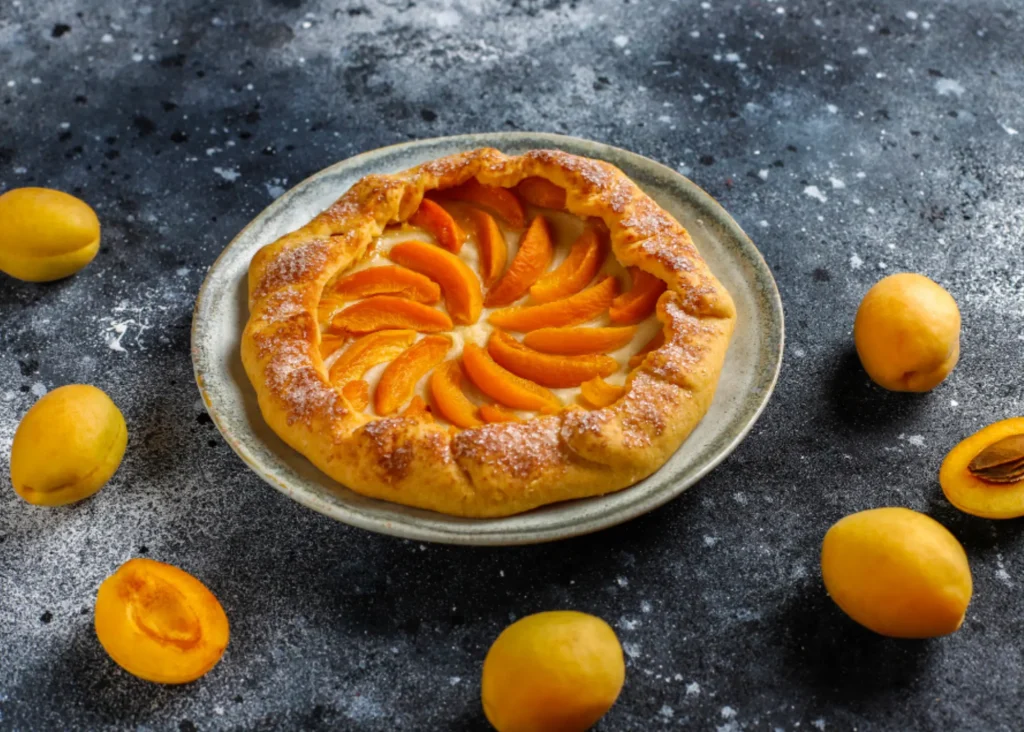
For those living with diabetes, the key to savoring desserts lies in controlling the portion size. Even diabetic-friendly desserts can cause blood sugar spikes if consumed excessively. The good news is that with a few simple strategies, you can enjoy your favorite treats while maintaining control over your diabetes.
Here are some effective tips for managing portion sizes:
- Try using smaller plates and bowls to create the illusion of a larger portion.
- Pre-portion desserts into individual servings to avoid overeating.
- Freeze individual portions to enjoy a treat occasionally.
- Share desserts at restaurants to indulge without consuming a full portion.
- Opt for mini desserts that satisfy your sweet cravings with minimal impact.
Eating dessert mindfully and planning for it within your daily carbohydrate allowance are also crucial. Combining a small dessert with protein, like a few nuts, can help minimize the impact on your blood sugar. By adopting these strategies, you can enjoy treats while managing your diabetes effectively.
| Portion Control Tip | Benefit |
|---|---|
| Using smaller plates | Creates the illusion of a larger portion, increasing satisfaction |
| Pre-portioning desserts | Prevents mindless overeating and aids in carbohydrate counting |
| Freezing individual portions | Allows for occasional treats without having the entire dessert available |
Tips for Adapting Your Favorite Desserts
With a few tweaks, you can transform traditional desserts into diabetic-friendly treats. Most traditional dessert recipes can be adapted with simple substitutions and modifications.
To start, consider reducing sugar by 25-50% in most recipes, which doesn’t significantly affect texture or taste, especially when enhanced with spices. Replacing white flour with whole grain, almond, or coconut flour increases fiber and reduces the glycemic impact.
| Modification | Benefit |
|---|---|
| Reduce sugar by 25-50% | Less sugar, same taste |
| Replace white flour | Increased fiber, reduced glycemic impact |
| Add nuts or seeds | Increased protein and healthy fats |
| Use pureed fruits | Replaces some or all of the fat and sugar |
Other tips include using pureed fruits like applesauce or mashed bananas to replace some or all of the fat and sugar, incorporating dark chocolate instead of milk chocolate, and experimenting with alternative sweeteners. Being patient with the adaptation process is crucial – it may take several attempts to perfect a diabetic-friendly version of a favorite recipe.
When to Enjoy Diabetic Desserts for Optimal Blood Sugar Control
You can enjoy desserts even with diabetes if you choose the right moment. The timing of your dessert consumption plays a significant role in managing your blood sugar levels.
Eating dessert immediately after a balanced meal that includes protein, fiber, and healthy fats can minimize blood sugar spikes. On the other hand, having dessert too long after a meal, when your blood sugar has already dropped, can lead to more pronounced spikes.
- Consider having dessert in the morning when your insulin sensitivity is higher.
- Pairing dessert with physical activity, like an after-dinner walk, can help your body use glucose more effectively.
- Monitor your individual response to desserts at different times to identify your optimal timing.
Working with a registered dietitian can help you develop a personalized plan for incorporating desserts into your meal schedule, ensuring that your sugar intake is balanced and your diabetes is under control.
Monitoring Your Response to Diabetic Desserts
To enjoy desserts without compromising your diabetes management, monitoring your response is essential. Regular blood glucose monitoring before and after consuming desserts helps you understand your body’s unique response to different sweet treats.
Keeping a food diary that includes the desserts you eat and your corresponding blood sugar readings can identify patterns and problematic ingredients. For instance, you might discover that certain desserts cause a spike in your blood sugar levels, while others have a minimal impact.
- Testing your blood sugar at 1-hour and 2-hour intervals after eating dessert provides a more complete picture of its effect.
- Different desserts with the same carbohydrate content may affect your blood sugar differently due to other ingredients, such as fiber or fat.
- Your response to the same dessert may vary based on factors like stress, illness, or time of day.
Working with your healthcare provider to interpret your monitoring results can lead to more personalized dietary recommendations. Continuous glucose monitors (CGMs) can provide detailed information about how specific desserts affect your blood sugar curve, helping you make informed choices.
| Dessert Type | Carb Content | Impact on Blood Sugar |
|---|---|---|
| Fruit-based desserts | 20g | Moderate spike |
| Chocolate treats | 25g | Significant spike |
| Greek yogurt desserts | 15g | Minimal impact |
By adjusting portion sizes based on your monitoring results, you can fine-tune your approach to enjoying desserts. Being aware of how exercise affects your response to desserts allows for more flexibility in your diet. Over time, monitoring helps you develop an intuitive understanding of which desserts work best for your body.
Remember, occasional higher readings after a special treat aren’t cause for alarm – it’s the overall pattern that matters most. By being mindful of your body’s response and making adjustments accordingly, you can enjoy diabetic desserts while maintaining good diabetes management.
Conclusion
With the right approach and knowledge, you can enjoy delicious diabetic desserts while keeping your diabetes under control. The key is making smarter choices and adjustments to satisfy your sweet tooth without compromising your health. The desserts and recipes explored in this article offer a variety of options to suit different tastes and occasions, from flourless chocolate cookies to Greek yogurt parfaits.
Understanding how to manage your blood sugar levels empowers you to adapt recipes and create your own diabetic-friendly treats. It’s crucial to maintain portion control, be mindful of the timing of your dessert consumption, and monitor your response to different desserts. By leveraging natural sweeteners, high-fiber ingredients, and healthy fats, you can create desserts with minimal glycemic impact.
Remember, managing diabetes is a journey, and it’s essential to be patient as you discover what works best for your body. With creativity and the right knowledge, you can continue to enjoy your favorite desserts while prioritizing your health and well-being.

